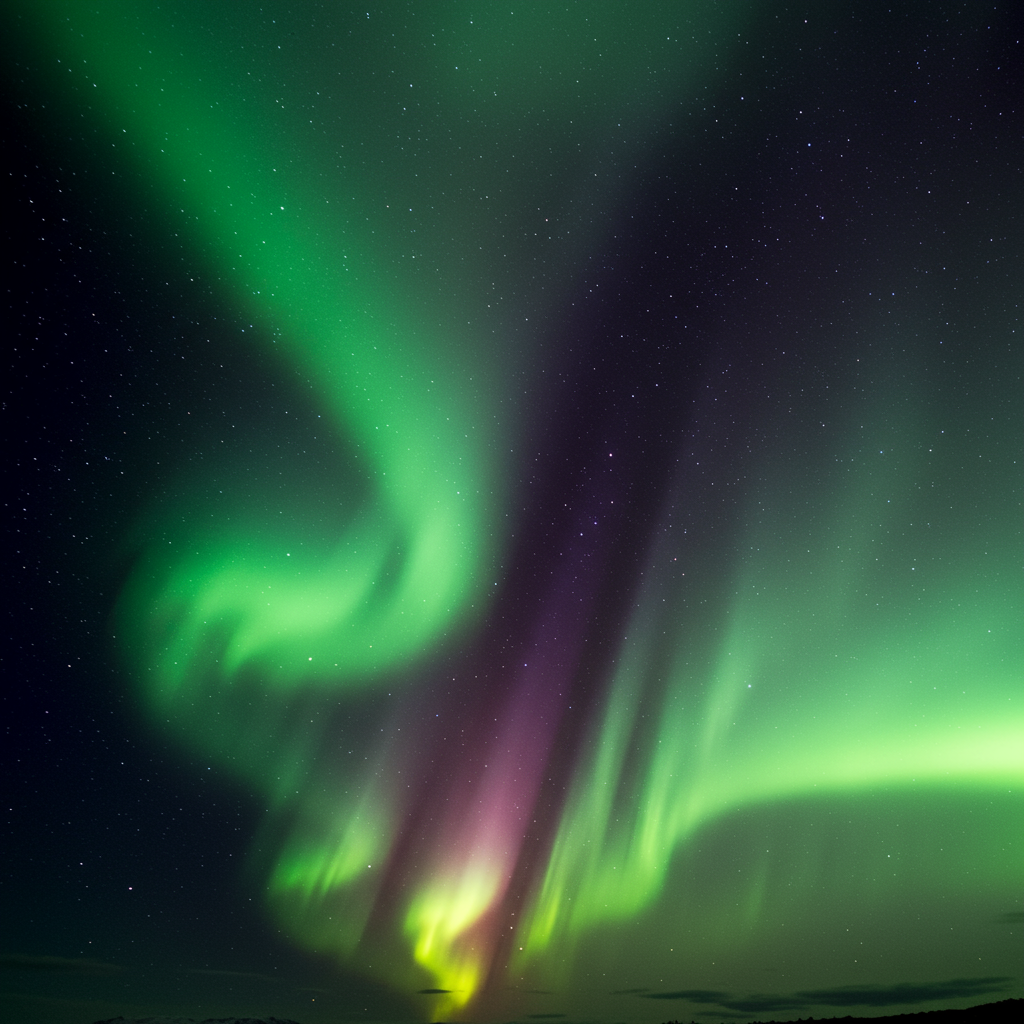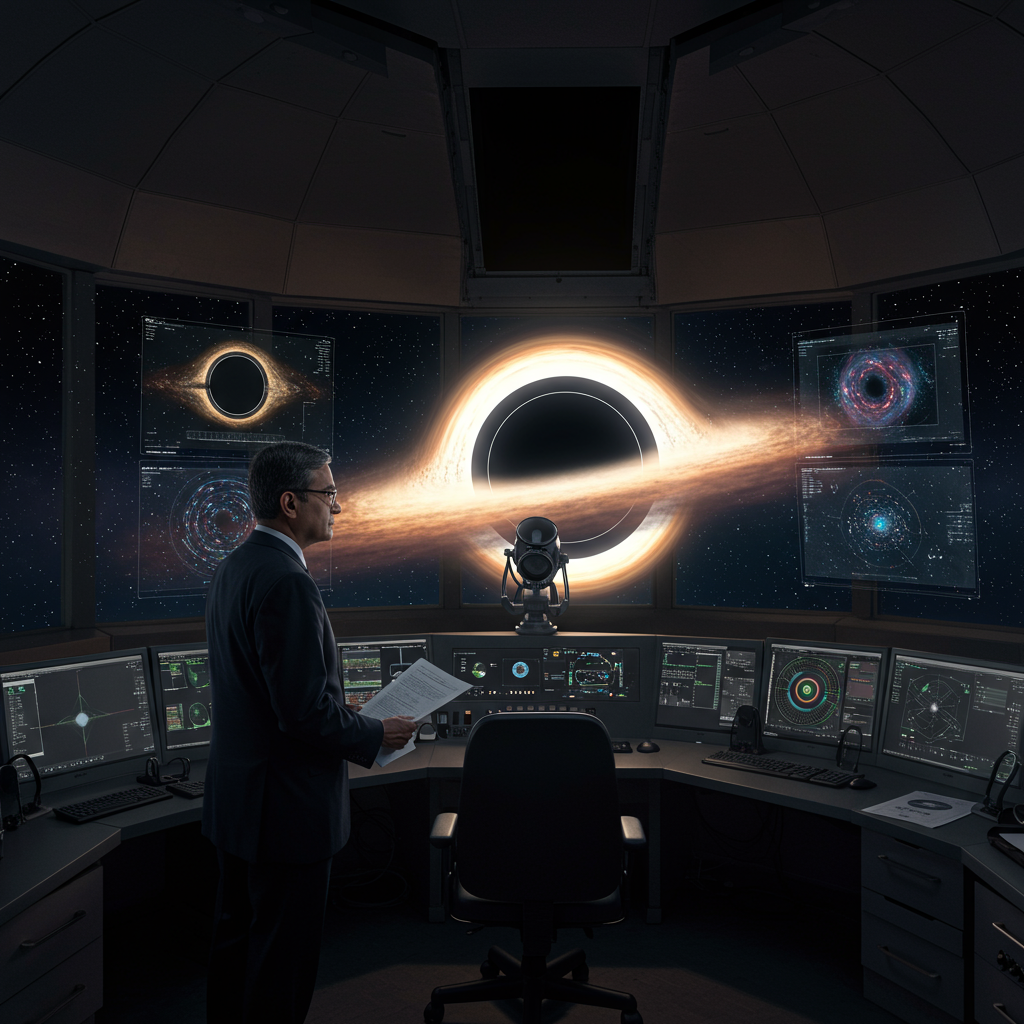A monumental discovery is rewriting our understanding of the universe’s most enigmatic signals. Astronomers have precisely localized the most powerful Fast Radio Burst (FRB) of its kind ever observed, an event so bright it initially baffled researchers. Nicknamed RBFLOAT, this dazzling flash of radio energy originated from a surprisingly nearby galaxy, offering unprecedented insights into the mysterious cosmic phenomena. This groundbreaking achievement, made possible by an advanced network of telescopes, is heralding a new era in astrophysics, promising to unravel long-standing questions about these fleeting, yet immensely powerful, space signals.
Unraveling the Cosmic Enigma of Fast Radio Bursts
Imagine a flash of radio light from deep space, lasting mere milliseconds but releasing more energy than our Sun produces over several days. This is the essence of a Fast Radio Burst (FRB) – one of the most intriguing cosmic mysteries of our time. These ultra-bright, super-short pulses of radio waves appear randomly across the sky, captivating scientists with their sheer power and elusive origins.
What Exactly Are FRBs?
Fast Radio Bursts are exactly what their name implies: incredibly rapid bursts of radio waves. Since their first detection in 2007, thousands have been logged, but their sources have remained largely unknown. FRBs fall into two main categories:
Repeating FRBs: These bursts flash multiple times from the same celestial location, sometimes even on a predictable schedule. Their repetition makes them easier to track and study.
One-off FRBs: These appear only once from a given spot. Their unpredictable and fleeting nature makes tracing them back to their origin a significant challenge for astronomers.
Understanding the differences between these types, and whether they stem from the same underlying astrophysical processes, is a central question in modern radio astronomy.
RBFLOAT: The Record-Breaking Cosmic Flash
On March 16, 2025, a singular, extraordinarily powerful FRB burst into existence. This event, officially designated “FRB 20250316A” and affectionately dubbed RBFLOAT (Radio Brightest FLash Of All Time, or sometimes Root Beer FLOAT), immediately shattered records. Its raw energy output in just a few milliseconds was equivalent to what our Sun generates over four full days – an astonishing display of cosmic power.
From Interference to Astrophysical Sensation
The initial detection of RBFLOAT by the Canadian Hydrogen Intensity Mapping Experiment (CHIME) radio telescope in British Columbia was so bright, it triggered alarms as potential local interference. “It was so bright that our pipeline initially flagged it as radio frequency interference, signals often caused by cell phones or airplanes that are much closer to home,” explained astrophysicist Wen-Fai Fong of Northwestern University. It took diligent investigation by the research team to confirm that this wasn’t a terrestrial signal, but an authentic, unprecedented astrophysical event. This immediate challenge underscored the sheer intensity of RBFLOAT, setting it apart from any FRB seen before.
Pinpointing the Source with Unprecedented Precision
Tracing a one-off FRB to its exact origin is notoriously difficult. Their blink-and-you-miss-it nature leaves little time for follow-up. However, the CHIME telescope has been significantly upgraded with Outrigger telescopes – smaller, secondary detectors strategically located across North America. This continent-wide network transforms CHIME into a massive, highly precise observatory.
With the full Outrigger array operational, researchers were able to triangulate RBFLOAT’s signal with remarkable accuracy. This allowed them to pinpoint its location down to an astonishing 45 light-years across. To put this in perspective, Bryan Gaensler of UC Santa Cruz likened the previous situation to knowing someone was calling but not their city, while now knowing their exact address and “which room of their house they’re standing in.” This precision led them directly to the spiral galaxy NGC 4141 in the Big Dipper constellation, a mere 130 million light-years away. This makes RBFLOAT the closest non-repeating FRB identified to date, offering an unparalleled opportunity for detailed study.
Unlocking the Magnetar Mystery
The precise localization of RBFLOAT ignited intense interest in identifying its progenitor. A growing body of evidence, including an FRB observed right here in our own Milky Way, strongly suggests that magnetars are the culprits behind many FRBs. Magnetars are incredibly dense neutron stars with magnetic fields thousands of trillions of times stronger than Earth’s. These extreme conditions can trigger colossal flares, releasing immense bursts of energy.
A Spiral Arm, But With a Twist
RBFLOAT was found on a spiral arm of its host galaxy, NGC 4141. Spiral arms are typically bustling hubs of intense star formation, which aligns perfectly with the magnetar hypothesis. Magnetars are formed from the supernova remnants of massive, short-lived stars, which are abundant in these active regions.
However, the exact location presented an intriguing twist: RBFLOAT originated just outside the nearest star-forming clump within that spiral arm. Astronomer Yuxin “Vic” Dong of Northwestern University noted, “This location is intriguing because we would expect it to be located within the clump, where star formation is happening.” This unexpected placement suggests two fascinating possibilities:
- The progenitor magnetar might have been gravitationally “kicked” away from its birthplace within a dense star-forming region.
- Alternatively, it could have formed right at the observed site, away from the clump’s dense center.
This unique detail adds new complexity to the understanding of magnetar evolution and how FRBs manifest in different galactic environments.
The Role of Multi-Wavelength Astronomy
To delve deeper into RBFLOAT’s environment, astronomers leveraged a suite of powerful telescopes beyond CHIME. Follow-up observations were conducted using the MMT telescope and the Keck Observatory. Critically, a survey of the location using the James Webb Space Telescope (JWST), published in a second accompanying paper, provided crucial near-infrared imaging. This multi-wavelength approach provided a comprehensive view, further supporting the interpretation of RBFLOAT’s intriguing location and strengthening the magnetar hypothesis. These combined observations are a testament to the power of collaborative astronomical research.
A New Era in Fast Radio Burst Science
RBFLOAT’s extreme brightness and relative proximity make it a “goldmine” for astronomers. This singular event promises to yield significant clues, helping scientists differentiate between repeating and one-off FRBs and ascertain whether magnetars are indeed the sole objects capable of producing these phenomenal bursts. Data from individual, exceptionally well-localized FRBs like RBFLOAT are indispensable for interrogating these fundamental questions.
The CHIME Outriggers: A Game-Changer
The detection of RBFLOAT, primarily facilitated by the enhanced capabilities of the CHIME Outriggers, signals a pivotal moment in FRB research. As astronomer Tarraneh Eftekhari of Northwestern University enthusiastically stated, “Thanks to the CHIME Outriggers, we’re now entering a new era of FRB science.” The full CHIME-Outrigger network represents a significant leap forward, providing an “unprecedented sharpness of vision” to locate these fleeting signals.
With hundreds of precisely localized FRB events anticipated in the coming years, researchers are poised to build a comprehensive catalog. This surge in data will broaden astronomers’ understanding of the diverse environments from which these mysterious signals emanate. It’s a “game-changer for understanding what’s behind them,” according to Mawson Sammons, a postdoctoral researcher at McGill University.
What RBFLOAT Means for Future Discoveries
RBFLOAT is not just an isolated finding; it’s a harbinger of future breakthroughs. Its detection demonstrates the incredible potential of the upgraded CHIME system to unlock the universe’s most transient secrets. Scientists anticipate that studying how RBFLOAT’s radio waves traveled through vast stretches of space will offer unique opportunities to learn about the intergalactic medium, probe cosmic magnetic fields, and even test models of fundamental physics. As astronomers continue to localize more bursts with this advanced system, they move closer to answering whether FRBs represent a single phenomenon or a diverse family of cosmic explosions. RBFLOAT is truly “just the beginning” of this exciting new chapter.
Frequently Asked Questions
What makes RBFLOAT the brightest Fast Radio Burst ever detected?
RBFLOAT, detected on March 16, 2025, by the CHIME telescope, stands out due to its immense energy release in mere milliseconds. It discharged as much energy as our Sun produces over four days, making it the most powerful non-repeating Fast Radio Burst (FRB) observed to date. Its initial brightness was so extreme it was mistakenly flagged as local radio frequency interference before being confirmed as an astrophysical signal.
How did the CHIME Outriggers enable such precise localization of RBFLOAT?
The CHIME telescope was augmented with ‘Outrigger’ telescopes, smaller detectors strategically placed across North America. This transcontinental network allowed researchers to triangulate the RBFLOAT signal with unprecedented accuracy, achieving a resolution of just 45 light-years. This precision enabled them to pinpoint the burst’s origin to the outskirts of the spiral galaxy NGC 4141, located 130 million light-years away, making it the closest non-repeating FRB ever localized.
What does the discovery of RBFLOAT mean for future understanding of FRBs?
RBFLOAT’s extreme brightness and proximity provide invaluable clues about the nature of Fast Radio Bursts. Its precise localization allows for detailed study of its host environment, which supports the magnetar hypothesis for FRB origins but also presents intriguing details, such as its location outside a star-forming clump. This discovery, along with the enhanced CHIME Outrigger capabilities, marks a “new era” of FRB science, promising hundreds more localized events. This will help astronomers understand if repeating and one-off FRBs are distinct phenomena and if magnetars are the sole progenitors, bringing them closer to unlocking these cosmic mysteries.
Conclusion: Peering Deeper into the Universe’s Mysteries
The discovery of RBFLOAT is more than just a new record; it represents a profound leap in our ability to observe and understand the most energetic and ephemeral events in the cosmos. By meticulously tracing this dazzling flash to its galactic home, astronomers are not only piecing together the puzzle of Fast Radio Bursts but also pushing the boundaries of astrophysical detection. With the continued operation of the CHIME Outriggers and other advanced observatories, the universe’s most fleeting signals are beginning to reveal their deepest secrets. This ongoing quest promises an exciting future, as scientists peer ever deeper into the fundamental workings of our universe.




